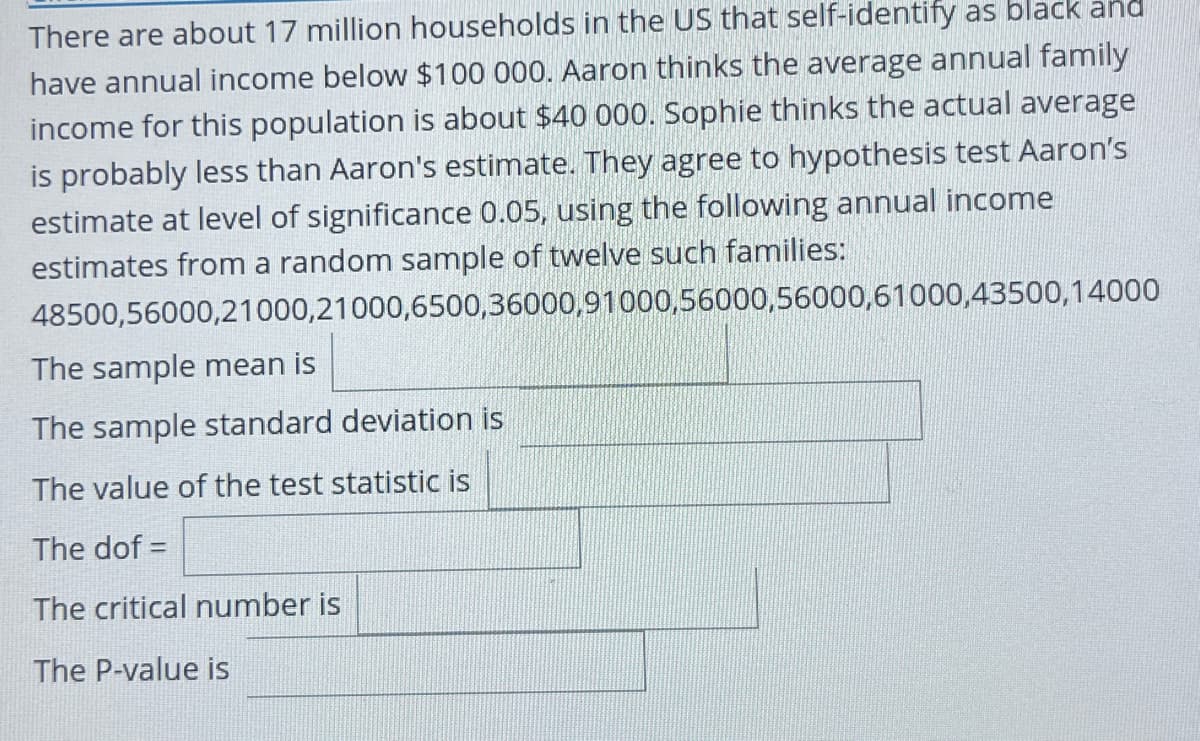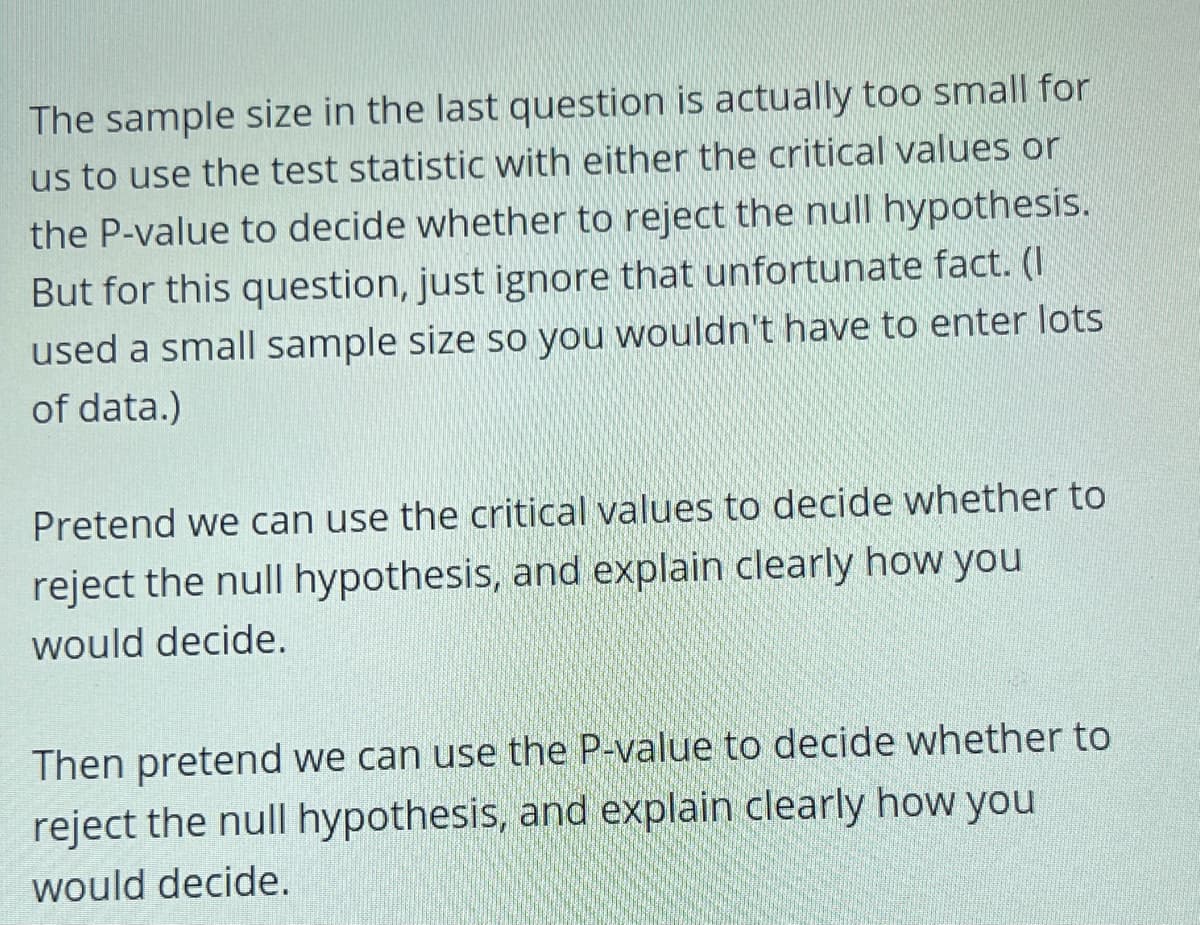There are about 17 million households in the US that self-identify as black al have annual income below $100 000. Aaron thinks the average annual family income for this population is about $40 000. Sophie thinks the actual average is probably less than Aaron's estimate. They agree to hypothesis test Aaron's estimate at level of significance 0.05, using the following annual income estimates from a random sample of twelve such families: 48500,56000,21000,21000,6500,36000,91000,56000,56000,61000,43500,14000 The sample mean is The sample standard deviation is The value of the test statistic is The dof = The critical number is The P-value is
Unitary Method
The word “unitary” comes from the word “unit”, which means a single and complete entity. In this method, we find the value of a unit product from the given number of products, and then we solve for the other number of products.
Speed, Time, and Distance
Imagine you and 3 of your friends are planning to go to the playground at 6 in the evening. Your house is one mile away from the playground and one of your friends named Jim must start at 5 pm to reach the playground by walk. The other two friends are 3 miles away.
Profit and Loss
The amount earned or lost on the sale of one or more items is referred to as the profit or loss on that item.
Units and Measurements
Measurements and comparisons are the foundation of science and engineering. We, therefore, need rules that tell us how things are measured and compared. For these measurements and comparisons, we perform certain experiments, and we will need the experiments to set up the devices.


Step by step
Solved in 6 steps


